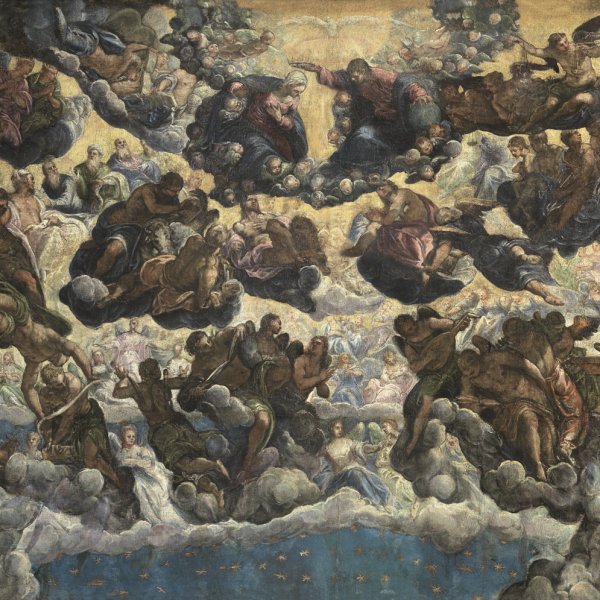Portrait of a Senator
Portraiture occupies a significant position within Tintoretto’s oeuvre along with other genres, of which the most notable was religious painting. In the 1540s the artist executed important portraits in which he developed the models and formulas to be used over the following decades. Among these early portraits is Portrait of a Man in the Musée du Louvre of around 1547–48. In that work the sitter is presented more than half-length with the head turned in a pose that Tintoretto would continue to explore throughout his career. The painting includes a lightly painted interior that the artist would tend to omit in most of his later portraits. Other early examples of this type are the Portrait of a Man of 1547 in the Rijksmuseum Kröller Müller in Otterlo, and the head in the National Gallery of Ireland of around 1546–48.
The present bust is dated to the last period of Tintoretto’s career when he was still engaged on the decoration of the Scuola Grande di San Rocco, combining that project with other commissions. In an Italian private collection until 1928, the canvas then passed through the hands of the Lucerne dealers Böhler & Steinmeyer, from whom it was acquired for the Thyssen-Bornemisza collection prior to 1930. It was included in the exhibition of works from the collection held in the Neue Pinakothek in Munich that year. The catalogue of that exhibition briefly summarised Berenson and Gronau’s opinions on the attribution, written prior to its acquisition for the Thyssen-Bornemisza collection. On the death of Hans Thyssen-Bornemisza in 1947 the painting passed by inheritance to his daughter the Countess of Batthyány. It was acquired in 1969 by Baron Hans Heinrich Thyssen-Bornemisza for his collection at Villa Favorita.
The painting was the subject of study by Erick von der Bercken who dated it to the 1580s. Paola Rossi included it in her catalogue of the artist’s portraits, considering it a late work and comparing it stylistically with one of the portraits by Tintoretto now in the Kunsthistorisches Museum, Vienna.
The sitter, a Venetian senator, is present bust-length and outlined against a dark background. His body is arranged in three-quarter profile while his head turns towards the viewer and receives the full impact of the light. The face, with its astute gaze and bony structure, is rigorously constructed and includes details such as the large, twisted nose and the wry gesture of the mouth concealed by the heavy beard, all details that help to create a sense of life and expressivity in the model. The warm tones on the cheekbones, the end of the nose and part of the forehead are continued in the strong crimson of the robe in which the folds are deftly conveyed through rapid brushstrokes, as is the texture of the cut velvet stole that falls from his left shoulder.
Mar Borobia









